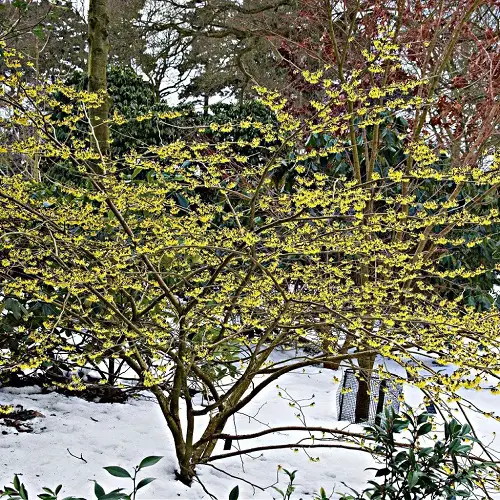Looking for cold-hardy, frost-resistant plants for your winter garden? We’ve curated a list of the best Flowers That Grow In Snow!
As thick blankets of snow envelop your backyard, most gardens retreat into dormancy. But not all flora bows to nature’s icy grip. Our selection of winter-hardy flowers growing in the snow defies the cold like no other, livening up frosty backdrops with exquisite hues!
Flowers That Grow In Snow
1. Snowdrop
Botanical Name: Galanthus nivalis
These delicate, bell-shaped flowers with green markings on their inner petals are one of the few flowers that bloom in December and beyond. Emerging gracefully through melting snow, the flowers are 4-6 inches tall, with green leaves contrasting the winter garden.
These winter bloomers mark the beginning of the new year. If you wonder how these stand snow, these flowers contain natural antifreeze proteins, which allow them to thrive in subzero temperatures.
2. Winter Aconite
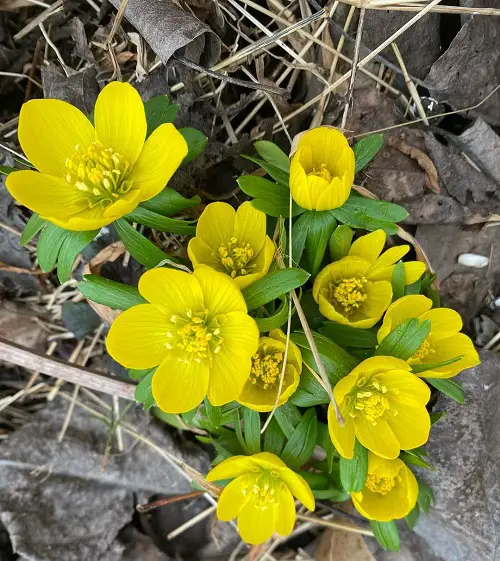
Botanical Name: Eranthis hyemalis
In late winter, you will see bright yellow, buttercup-like flowers pushing out from the snow. Surrounded by green leaflets that are a few inches tall, this winter flowering shrub blooms even in extreme cold, covering snowy grounds in carpets of golden yellow.
Their tuberous roots make them drought-resistant, and they love soil enriched with organic matter such as compost or leaf mold.
3. Crocus
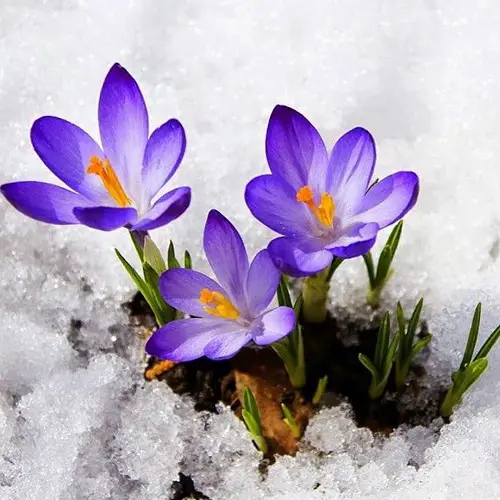
Botanical Name: Crocus spp.
This is the most beautiful flower that you can have around in winter. Crocus are goblet-shaped flowers in purple, white, and yellow shades that thrive on sunny winter windowsills. These flowers thrive in the snow from late winter to early spring!
Crocus flowers close at night and in cloudy weather—a phenomenon known as nyctinasty. One of the first food sources for bees in spring, these flowers are great for pollinators and enrich biodiversity in your garden.
4. Hellebore

Botanical Name: Helleborus niger
This evergreen perennial produces saucer-shaped, white flowers, sometimes in blushed pink with golden-yellow stamens. Also popularly known as Christmas rose, it’s historically linked to European Christmas folklore.
As a gardener, you will love these for their deer-resistant and evergreen nature. To grow them, ensure partial shade and moist, well-drained soil. Check out these amazing hellebore varieties for your home!
5. Glory of the Snow
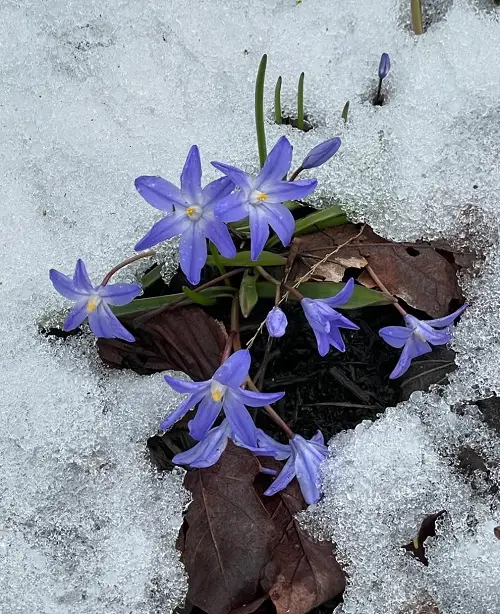
Botanical Name: Chionodoxa luciliae
The name is enough for this flower to make its way to this list. The glory of the Snow features star-shaped flowers with six delicate petals appearing in pale blue, lavender, or white. You will see them blooming in early spring.
The botanical name “Chionodoxa” of this flower comes from Greek words meaning “glory” and “snow,” which perfectly describes its ability to thrive while surrounded by patches of melting snow.
6. Winter Jasmine
Botanical Name: Jasminum nudiflorum
If you want to grow a vine that blooms during the colder months, you should go for winter jasmine. It blooms with yellow flowers in February or March and can tolerate temperatures as low as 5 F (-15 C).
The bright five-petaled flowering vine or shrub reaches 10 feet tall, offering ample green in a winter garden. Winter jasmine blooms even before leaves appear, looking stunning against a snow-covered landscape.
7. Witch Hazel
Botanical Name: Hamamelis virginiana
Around mid to late winter, this shrub awakens from dormancy, pushing out yellow flowers with spidery, ribbon-like shapes that emerge directly from bare branches. Witch Hazel’s flowers release a spicy, sweet fragrance in the chilly air.
Also known for its medicinal properties, the plant thrives in organic-rich, well-draining soil under full sun.
8. Iris
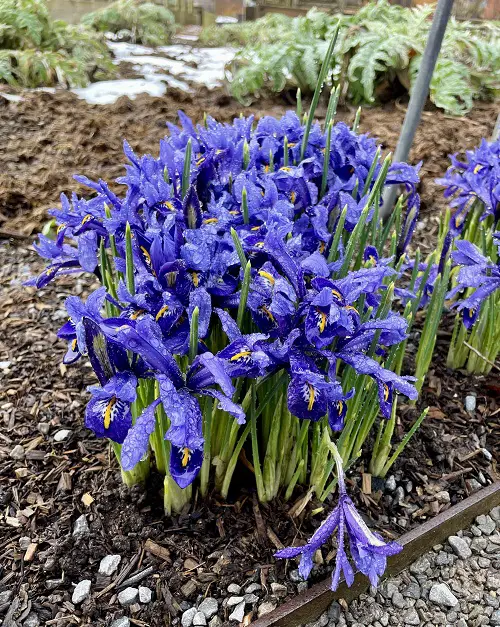
Botanical Name: Iris reticulata
Also called dwarf iris, this mini iris grows 4-6 inches tall with purple, blue, or yellow blooms. With slender green foliage resembling grass blades, this bulb needs a period of cold dormancy, making it well-suited for blooms as snow begins melting.
An important late-winter food source for pollinators, dwarf iris prefers moist, acidic soil and partial sun and shade.
9. Winter Heath

Botanical Name: Erica carnea
One of the best plants for winter pots, alpine heath is a late winter to early spring, mat-forming evergreen shrub with bell-shaped blooms in soft pink, purple, and white. Blooms may last up to three weeks under the right conditions.
Growing as a ground cover, this plant prefers cool summers, afternoon shade, and sandy, well-draining soil. Water it in a way that keeps the soil moderately moist but avoids soggy conditions.
10. Cyclamen
Cyclamen is a beautiful addition to your cold-weather planters and winter garden beds. It is a hardy perennial known for its ability to bloom in the snow, particularly varieties like Cyclamen coum and Cyclamen hederifolium.
Featuring nodding flowers with upswept petals in pink, white, and deep red, this one blooms from fall to spring and goes dormant in summer. With tuberous roots that store energy for surviving in the cold, the plant prefers slightly acidic soil and filtered sunshine.




